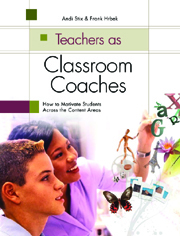
Raising a child is never as easy as it sounds. Hillary Rodham Clinton once wrote a small book on how It Takes a Village to set a youngster on the difficult path of growing up and acquiring an education and assuming the responsibilities of adulthood. Such a task is a demanding chore that needs the cooperation and efforts of many individuals, all working together in a cooperative atmosphere. No one works in isolation.
The school too, like It Takes a Village, should always be perceived as an inclusive vibrant functioning community, with all levels and parts cohesively meshed in sustaining the common goal: education. The administrators, teachers, students, and parents all have a common objective, to give the youngsters in the school on any given day the best education that the system can provide.
What is essential to the overall functioning of any school is the tone, and that is set by the principal’s leadership qualities. The administrative apparatus is the main ingredient that eventually determines how well all of the gears mesh throughout the building. Will teachers find cooperation or confrontation? Do parents feel they can work with the school or are they marginalized? Do students have a school that is interesting and challenging or boring and plagued by absenteeism? The principal’s commitment to what needs to be achieved, the policies that are set, the actions that are taken, all combine to make the school environment what it is.
 Classrooms should hum with continuous activity, creating an atmosphere where contentment, intellectual challenge, and high expectation reign supreme, meaning the youngsters are on track for a quality education, the parents are proud of their children’s progress, and teachers have a sense of fulfillment in seeing that the work they’re doing with their students is producing positive results. By working on a more intimate level with the staff, fostering a sense of cooperation and valuing their input, and complimenting them on their efforts and the achievement of classroom goals, administrators can attain a higher level of accomplishment for the school.
Classrooms should hum with continuous activity, creating an atmosphere where contentment, intellectual challenge, and high expectation reign supreme, meaning the youngsters are on track for a quality education, the parents are proud of their children’s progress, and teachers have a sense of fulfillment in seeing that the work they’re doing with their students is producing positive results. By working on a more intimate level with the staff, fostering a sense of cooperation and valuing their input, and complimenting them on their efforts and the achievement of classroom goals, administrators can attain a higher level of accomplishment for the school.
The application of coaching skills is a quality tool that can make it all come about. Whoever is the coach and applying the coaching methodology – whether the superintendent, the administrators, the teachers, even the students – are all working for the common goal, to create a community and a happy and satisfying school that has every element at every level working to that end.
The GOPER Model can be used at any level: From an administrator to a teacher, a teacher coaching a fellow teacher, a teacher coaching his students, or cooperative groups of students coaching each other.
In our example today, an administrator can set the tone of the school by actively working with the staff. The AP’s and teachers can be guided through coaching to set goals, determine their options, plan carefully, eliminate whatever might be presented as an impediment, and then finally reflecting on all that had taken place to make the next performance easier.
I have always made it easy to remember this process by referring to it as the GOPER Model:
- G: Goal
- O: Options
- P: Plan of Action
- E: Eliminate the Roadblocks
- R: Reflection
In addition, here is an example where a principal, Ms. Zhou (Sue Yin), is working with her assistant, Mrs. Hayakawa (Oriha), to set goals and determine if adequate preparation has been given to have students ready to take the upcoming State-mandated eighth-year mathematics examinations.
Principal-Assistant Principal Coaching Vignette Using the GOPER Model
Sue Yin: Oriha, I have some concerns regarding the upcoming State-mandated eighth-year math exams. Are the students being prepared adequately? You and I are both aware that many of the youngsters who will be tested are recent placements in the ESL classes, and that in itself may present a difficulty. What can you tell me about the teachers and the students in the program?
Oriha: There may be a problem determining if each level is meeting their requirements and adequately preparing students for the math tests. It would probably help immensely if the teachers involved all received a list of expectations for each level, to determine if the youngsters can handle the work and meet the requirements.
Sue Yin: We’ve always given all the teachers the opportunity to take ownership within the department. What steps can we take for them to establish their own objectives and levels, instead of imposing our own rules and standards?
Oriha: I’ll ask them to attend a lunch meeting, and they can all suggest how they think the ESL classes are handling the math skills, and if they feel the students have the competency and skills to do well.
Sue Yin: Perfect. An excellent idea (compliment)! What specifically would you like them to discuss (purpose; setting the goal)?
Oriha: I would focus on each math teacher speaking to the entire group and defining exactly what their objectives and expectations are, and if they are attainable.
Sue Yin: That’s a wonderful way of opening up communication throughout the department (compliment). How will you know what preparation has taken place for the examination (focusing on the goal)?
Oriha: There might be some difficulty. We’ll be asking them for some accountability, won’t we?
Sue Yin: Yes, some difficulty may certainly arise, and there is a degree of accountability. Give some thought to how you could make that request before speaking with the group (understanding the options available).
Oriha: I might ask everyone to take a few minutes to write down what they are doing to prepare for the math tests prior to our meeting (creating a plan).
Sue Yin: Yes, very good. You’ll be giving them a little bit of time to think about their teaching (another compliment; teachers can reflect). They can get their thoughts down on paper, and whatever anxiety may exist can be glossed over by the prep (this eliminates roadblocks). Our budget allows for some food expenditure, if you’re interested.
Oriha: Great. I can make an announcement tomorrow morning. I’ll have the math department meet for pizza, bagels, and coffee in the library on Friday.
Sue Yin: Can you fit me into the loop on Monday? (time for reflection).
Oriha: No problem. That’s a go!!!
Conversation and dialogue is a combination that, together with coaching skills, allows the administration and teachers to get together and talk about methods and strategies, cultivating a healthy school-wide environment. Applying the coaching skills when working with colleagues makes it a part of what is taking place in the school on a daily basis, helping teachers be coaches rather than simply thinking like a coach. It is a way of opening up all levels of communication, from the top down and also all around. The conversations and dialogue that take place are egalitarian, a quality that makes for a comfortable community and a happy school. This is an approach that spells success.
(c) 2011 by Andi Stix, Ed.D. & PCC and Frank Hrbek
For a more in-depth look at coaching, please refer to their book:(c) 2006 Teachers as Classroom Coaches, published by ASCD
By using this strategy, please describe in detail what you have learned that may have been missed by using a different strategy. Under what conditions do you think this strategy would be so powerful?
Andi Stix is an educational consultant & coach who specializes in differentiation, interactive learning, writing across the curriculum, classroom coaching, and gifted education. For further information on her specialties or social media, please email her on the Contact page.





